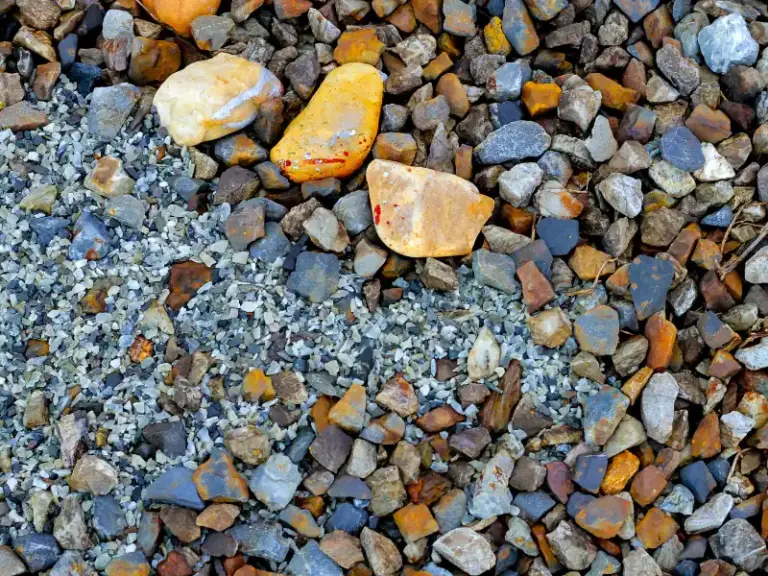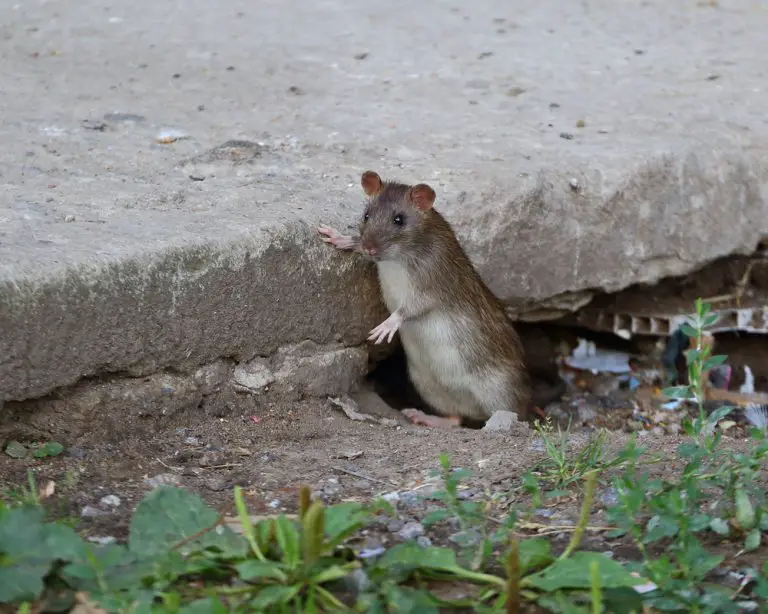How Much Does a Yard of Topsoil Weigh?
Topsoil contains the highest concentration of organic matter and microorganisms such as mineral particles and nutrients like nitrogen, phosphorus, and magnesium. Topsoil is beneficial in filing holes, raising beds, and repairing eroded space in the yard. But how much does a yard of topsoil weigh?
A yard of topsoil measures approximately 2,100 pounds while a cubic yard weighs about 1,080 pounds. However, this may vary depending on the type of soil, moisture, debris, rocks contained therein.
Topsoil is an uppermost layer that contains a mixture of sand, silt, clay, and naturally broken down organic matter (humus) that helps to sustain plant life. It’s separate from dirt which is found when you excavate a basement or attic and no plants can thrive in it, unlike topsoil.
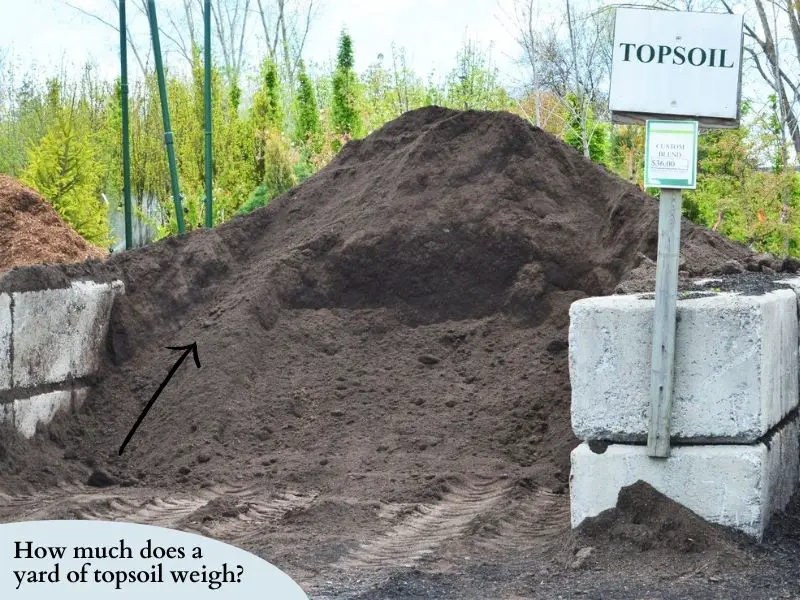
How much does a yard of topsoil measure?
A yard of topsoil measures around 2,100 pounds. The exact measure depends on various factors such as moisture, rocks, and debris. For example, one yard of dry topsoil weighs approximately 2,000 pounds while one yard of saturated topsoil weighs around 3,000 pounds. This is based on the cubic yard calculation where 1 cubic foot of topsoil weighs roughly 40 pounds.
You can use a wheelbarrow to measure the cubic yard of dirt or topsoil. It’s good to note that a cubic yard of dirt is equivalent to about 9 to 14 wheelbarrows depending on the manufacturer’s specifications. Such a cubic yard of dirt would cost an average of $12 while that of topsoil can average up to $32 depending on distance and state.
Average weight of a cubic yard of topsoil
The weight of topsoil depends on moisture and soil content. On average, a cubic yard of topsoil weighs approximately 1,080 pounds. A cubic yard is made up of 27 cubic square feet, therefore, if you are buying it in bags, you will need 36 bags weighing 40 pounds each making a total of 1,440 pounds of topsoil per cubic yard.
How is topsoil measured?
To measure the topsoil, it’s dependent on the size of your planting project. Simply measure the dimensions of your project area and multiply it by the depth required to calculate the amount of topsoil you need.
For example, if the project area is 12m X 13m and needs coverage of 140mm then it will be 12 X 13 X 0.14=21.84m3
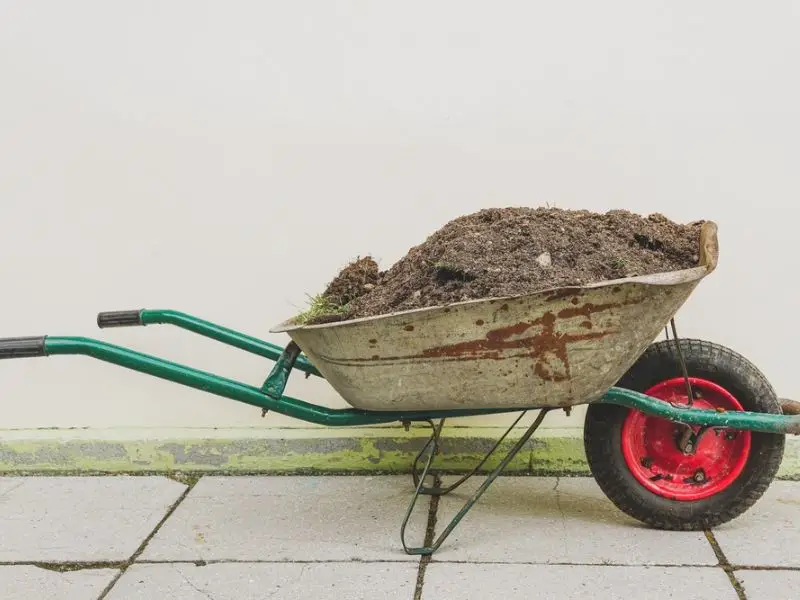
Variables to consider when taking the weight of topsoil/dirt/garden soil
Weight is an indicator of soil health and compaction that affects infiltration, rooting depth, plant nutrient availability, water capacity, and microorganism activity. It is affected by inherent factors such as soil texture, moisture, and composition.
Soil Texture
Soil texture cannot be changed. Generally, well aggregated, loose, and porous soils weigh less while sandy soils weigh more since they have large pore spaces. Soil texture affects water capacity in the sense that sandy soils with a rougher texture cannot withhold water while soils with softer textures like clay can retain too much water.
It is advisable to get soil like loam soil with the most appropriate texture and water retention capacity. The water retention capacity affects weight with soils such as clay weighing more than sandy soils.
Moisture
Moisture in soils helps to hold them together which impacts their weight. For instance, a cubic yard of dry topsoil weighs approximately 2,000 pounds while the same soil when saturated with water weighs nearly 3,000 pounds.
I’d advise you to buy topsoil on a dry day when it has not been affected by rain or any other moisture so that you get a good amount of it.
Soil Composition
All soils including topsoil contain different minerals, microorganisms, and nutrients. their weight largely depends on this markup. For example, a cubic of dry, sandy soil weighs approximately 2,600 pounds while a cubic yard of dry clay soils weighs nearly 1,700 pounds.
Other factors that may affect the composition include straight versus blended soils. You can purchase soils containing compost or wood chips which add nutrients and enhance drainage respectively. These vary the soil’s weight.
What is the composition of topsoil?
The health and growth rate of plants are all related to the quality of topsoil. Top soil’s quality is influenced by several characteristics such as PH, texture, nutrient content, organic matter, and soluble salts. Therefore, it is imperative for it to meet acceptable standards for these properties. The standards can be met by knowing the correct composition of topsoil. Understanding the composition will help you select the right product for your project. I recommend the following composition
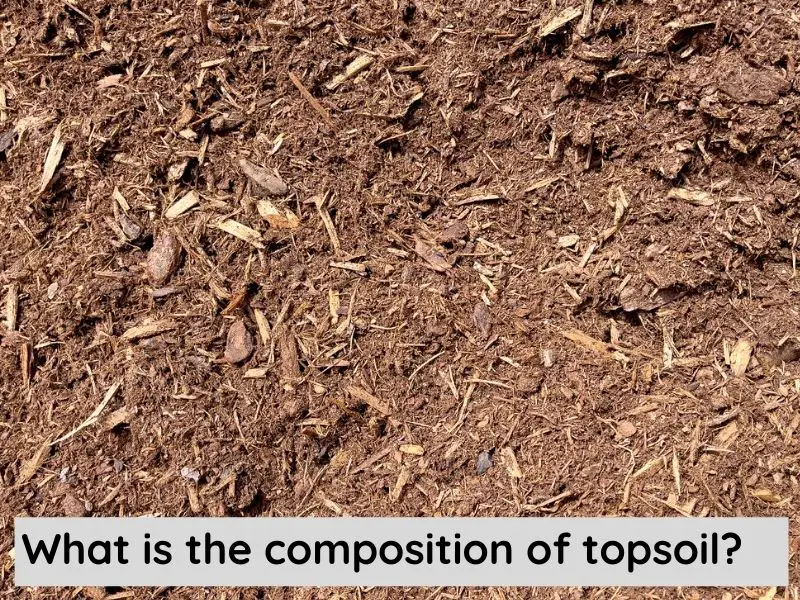
Here is the nutrients composition of topsoil:
N-Nitrogen
Nitrogen is required for the growth of leaves and stems. Lack of it leads to weak stunted growth and yellowing of older leaves. Note that too much nitrogen kills plants When you note these symptoms, I recommend that you add nitrogen to your soil through either organic methods like adding animal or plant manure to the soil planting green manure crops like borage, planting nitrogen-fixing plants like beans and peas, and adding coffee grounds to the soil, or inorganic methods.
P-Phosphorus
This is the key nutrient for root growth. Deficiencies can be identified through stunted root growth and dull green or purple discoloration on plants’ leaves. If you notice a deficiency, scatter bone meal in the ratio of 30 pounds of bone meal for every 1,000 square feet in case of severely deficient soil. Substitute for 20 or 10 pounds of bone meal for slightly deficient soil.
In case you do not have a bone meal, add green manure to the soil.
Mg- Magnesium
Magnesium is a constituent of the green pigment called chlorophyll that enables plants to photosynthesize. Deficiency may be noted by the yellowing of plants. You may use Epsom salts and lime to add magnesium to the soil. Dig your yard at least 6-8 inches and spread your amendment. You will need 7.5 pounds of lime per 100 square feet. Test your soil before trying any of these methods since adding amendments when you don’t need that may be harmful to your crops.
Organic Matter
Organic matter consists of living organisms that are crucial to soil function and plant growth. It binds mineral particles to crumb or granular structures. Understanding the overall weight of topsoil will help you prepare for the amount you need in your project.
How Much is the Yard of Topsoil
A yard of topsoils will cost between $12 to about $55 depending on the soil constituent and state. However, a cubic yard of dirt topsoil cost about $7 to $15 while for sand it costs about $15 to $40 inclusive of transport although it may vary depending on the distance and state.
How big is a yard of topsoil?
The term cubic yard means the volume equal to 1 yard X 1 yard X 1 yard. One yard is equal to 3 ft, therefore one cubic yard is equal to 3 ft X 3 ft X 3ft. It then translates that one cubic yard is equivalent to 27 cubic ft of topsoil
Sources and References
- Tamu.edu. Fertilizing a Garden
- Usda.gov. Soil Bulk Density
- Usu.edu. Topsoil Quality Guidelines for Landscaping

